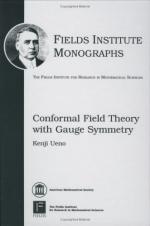|
This section contains 1,944 words (approx. 7 pages at 300 words per page) |

|
Gauge theory is concerned with the problem of comparing physical states at different space-time locations. To get a feel for the problem, it is best to begin with a simple example. Quantum chromodynamics is the theory of the force that binds quarks together. An initial presentation of the theory might begin by stating that the color force (a fanciful name having nothing to do with visual colors) comes in three color charges—red, blue, and green, and their anticharges—anti-red, anti-blue, and anti-green. Every quark has one of these charges, and a stable collection of quarks must have no net color. Thus, a stable three-quark object, such as a proton, can be formed from a red, a blue, and a green quark (red + green + blue = white, which is colorless), or a stable two-quark object, such as a pion, can be formed from a red quark and...
|
This section contains 1,944 words (approx. 7 pages at 300 words per page) |

|


